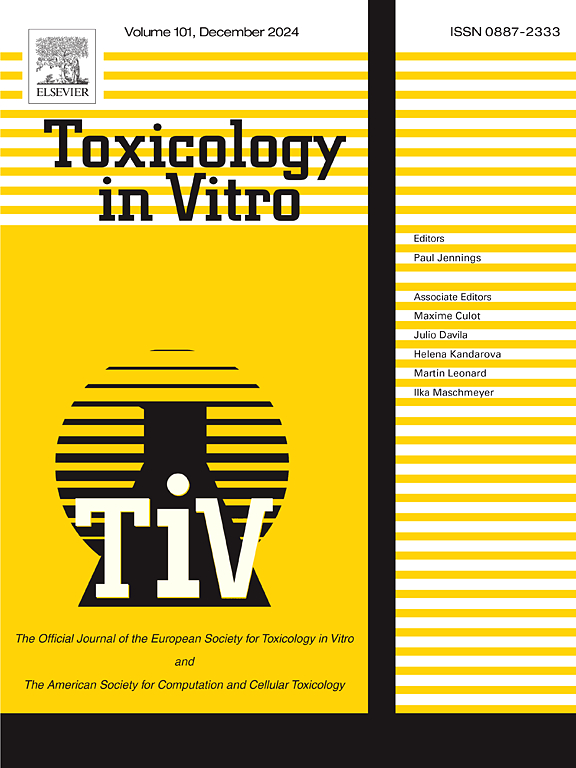Reexamining the acute toxicity of chloropicrin: Comprehensive estimation using in silico methods
IF 2.6
3区 医学
Q3 TOXICOLOGY
引用次数: 0
Abstract
Chloropicrin, historically infamous as a chemical warfare agent during World War I, has recently resurfaced in global conflicts, prompting a reevaluation of its acute toxicological significance. This study addresses the historical knowledge gap surrounding chloropicrin by employing in silico toxicology methods to estimate toxicophores and predict acute toxicity across various exposure routes. Allegations of its use in recent conflicts necessitate a deeper understanding of its toxicological profile, particularly in modern warfare scenarios. Qualitative analysis (STopTox and admetSAR) revealed chloropicrin to be toxic for oral, dermal, and inhalation administration, with the nitro group attached to the carbon atom identified as a significant contributor to its toxic profile. Quantitative in silico estimates, using multiple methods (TEST, ProTox-II, ADMETlab, ACD/Labs Percepta and QSAR Toolbox), indicated t-LD50 values of 48.71 mg/kg bw for oral exposure, 130.16 mg/kg bw for dermal exposure, and an inhalation t-LC50 of 0.022 mg/L. However, method inconsistencies and variability in dose conversion guidance highlight the importance of a cautious approach to interpreting results. Furthermore, the study explores the potential of in silico methods to reduce reliance on animal testing, providing a more efficient and humane alternative for toxicity assessments. The findings contribute to a comprehensive understanding of chloropicrin's acute toxicity, emphasising the relevance of in silico methods in guiding future toxicological studies and informing safety assessments in agricultural and wartime scenarios.
氯霉素急性毒性的再检验:计算机方法的综合评价
氯丁,在第一次世界大战期间作为一种化学战剂而臭名昭著,最近在全球冲突中重新出现,促使人们重新评估其急性毒理学意义。本研究通过采用硅毒理学方法估计毒团并预测各种暴露途径的急性毒性,解决了围绕氯丁的历史知识差距。关于在最近的冲突中使用它的指控需要更深入地了解其毒理学特征,特别是在现代战争情况下。定性分析(STopTox和admetSAR)显示,氯丁对口服、皮肤和吸入都有毒性,与碳原子相连的硝基被确定为其毒性谱的重要贡献者。使用多种方法(TEST, ProTox-II, ADMETlab, ACD/Labs Percepta和QSAR Toolbox)进行定量硅估计,表明口服暴露的t-LD50值为48.71 mg/kg bw,皮肤暴露的t-LC50值为130.16 mg/kg bw,吸入t-LC50为0.022 mg/L。然而,剂量转换指南中方法的不一致性和可变性突出了谨慎解释结果的重要性。此外,该研究还探索了计算机方法的潜力,以减少对动物试验的依赖,为毒性评估提供更有效和人道的替代方案。这些发现有助于全面了解氯丁的急性毒性,强调了计算机方法在指导未来毒理学研究和为农业和战时情况下的安全评估提供信息方面的相关性。
本文章由计算机程序翻译,如有差异,请以英文原文为准。
求助全文
约1分钟内获得全文
求助全文
来源期刊

Toxicology in Vitro
医学-毒理学
CiteScore
6.50
自引率
3.10%
发文量
181
审稿时长
65 days
期刊介绍:
Toxicology in Vitro publishes original research papers and reviews on the application and use of in vitro systems for assessing or predicting the toxic effects of chemicals and elucidating their mechanisms of action. These in vitro techniques include utilizing cell or tissue cultures, isolated cells, tissue slices, subcellular fractions, transgenic cell cultures, and cells from transgenic organisms, as well as in silico modelling. The Journal will focus on investigations that involve the development and validation of new in vitro methods, e.g. for prediction of toxic effects based on traditional and in silico modelling; on the use of methods in high-throughput toxicology and pharmacology; elucidation of mechanisms of toxic action; the application of genomics, transcriptomics and proteomics in toxicology, as well as on comparative studies that characterise the relationship between in vitro and in vivo findings. The Journal strongly encourages the submission of manuscripts that focus on the development of in vitro methods, their practical applications and regulatory use (e.g. in the areas of food components cosmetics, pharmaceuticals, pesticides, and industrial chemicals). Toxicology in Vitro discourages papers that record reporting on toxicological effects from materials, such as plant extracts or herbal medicines, that have not been chemically characterized.
 求助内容:
求助内容: 应助结果提醒方式:
应助结果提醒方式:


